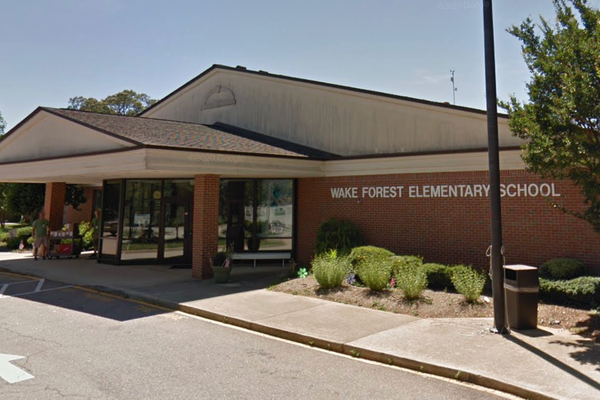No one wants to party anymore. Between 2003 and 2024, time spent attending or hosting social events decreased by 50 percent among Americans aged 15 and older, according to the American Time Use Survey. The youngest were most affected: for those aged 15 to 24, the decline was a staggering 69 percent. For that age group, face-to-face socialization of any kind has decreased by 35 percent over the past two decades.
The decline in partying among the young was perhaps summarized best by a recent Reddit post, in which a Gen Z user took to the Gen X-focused subreddit to ask if house party scenes from 1990s and 2000s teen movies were accurate. "Im Gen Z and have never been to anything like this," they wrote. "So was this a thing that just doesn't happen anymore, or is it just Hollywood trying to make me hate my life more." The post gained more than ten thousand upvotes, and a flurry of reminiscing about '90s-era high school ragers mixed with shock that few modern young people seem to have these experiences.
As a Gen Zer, I've felt this decline firsthand. I didn't go to any parties in high school, and only heard about one ever happening (I, being an uptight dork, was wisely not invited.) Despite being a lifelong 99th-percentile extrovert, I arrived at college somewhat disappointed that I was attending a notorious party school. Roof-shaking, lite beer-fueled parties, to me, seemed essentially anti-intellectual—populated by meathead frat bros and girls who wore crop tops in February, presumably because they had yet to discover feminism.
Experience swiftly changed my mind. But right as I was beginning to flex my partying muscles, COVID-19 strangled my aspirations. I came out of lockdown with a rabid desire to make up for lost time, and ever since, I've thrown parties with an ideological fervor. Within the past year, I've thrown 15 full-blown house parties with upwards of two dozen guests, and just as many smaller dinner parties or other gatherings with an average of 10 or so friends.
According to Partiful, the app that I use to organize most of my events, I was in the top 0.7 percent of party hosts for 2024. And my guest list keeps growing. When I hit it off with someone, one of the first things I ask them is whether they want to come to my next party. As a result, when I threw a party celebrating my recent book deal last month, 46 people came, packing my 900-square-foot townhouse to the gills.
But, much to my chagrin, I'm the only regular party thrower I know. When I look back at parties I've attended in the past year, almost all are birthday parties—few people I know want to throw a party for the sake of throwing one. I have a healthy friend group full of people who like to socialize, but not many want to host parties themselves.
The sharp decline in high school parties has a few obvious culprits, namely an increase in parental surveillance (how would a teenager even attempt a clandestine house party in the era of Ring cameras and Life360?) But it's less clear why so many people in my age group—the recent college grads who, aside from those still living at home to save money, are perfectly free to party where and how they please—are forgoing parties.
Here's one underrated factor: For years, popular culture has been permeated with deeply anti-party sentiment—an attitude that framed those eager to socialize as obnoxious and valorized staying at home alone. During my 2010s teenhood, Buzzfeed listicles and viral Tumblr posts reminded readers that introverts are tortured by small talk and portrayed extroverts as essentially mindless troglodytes. Online, reams of memes revel in canceling plans and spending a Saturday night in ones pajamas and glued to Netflix. COVID-19 only made things worse. Lockdowns got millions of people out of the habit of regular, in-person social interaction. And the ultra-introverts suddenly had a moral justification for their unwillingness to socialize.
Adding to the problem, college and high school students, in particular, were often subjected to strict social distancing and masking rules long after most businesses returned to normal. For example, the last place I was ever required to wear a mask was a university classroom. The effects were predictable. According to a 2023 poll, 18- to 29-year-olds were as likely to be lonely in February 2023 as the average adult was during the height of the pandemic in December 2020.
But all hope is not lost. If my case is any proof, partying is a teachable skill. You might not be a party person, and the idea of having a house full of revelers might sound daunting, expensive, or mathematically improbable. When I recently told an acquaintance I had invited 100 people to a party, he replied, "I don't even know a hundred people," which, is fair—but I promise, it can be accomplished. The best way to reverse the steady social decline gripping American life is to throw a good party, next weekend, if possible.
So, as a master party thrower, here's my advice.
First, a theme is always a good idea. Themes add an extra layer of fun and levity to a gathering and turn a casual hangout into an event. Food-based themes are simple to execute. Reason editor Liz Wolfe has hosted parties revolving around martinis, paella, and crab dishes. Costume parties are some of my favorites, and I've held a toga party, a Jane Austen-themed garden party, and several Drunk History parties over the years. PowerPoint parties, which require guests to deliver a humorous PowerPoint presentation, have become popular and are especially good for smaller groups. But themes are only limited by your imagination: a few years ago, I attended a party for the Feast of the Annunciation, complete with an "It's A Boy!" sign and amusingly ChatGPT-generated drinks inspired by different Marian apparitions.
Along those lines, putting a little extra effort into the details always pays off. Cheap streamers from Amazon automatically make a gathering feel more like a party. A tablecloth similarly elevates a dingy group-house table. I like to serve cocktails at my parties, and I always have a handmade menu, complete with little doodles of the drinks I'm serving.
Next, don't make people bring their own booze. BYOB strips so much hospitality and warmth from hosting, and indicates that you didn't feel like putting much effort into planning. BYOB is also just annoying. If I'm invited to a BYOB party, I am immediately less likely to attend. It's perfectly acceptable to welcome contributions—I certainly never say no when someone wants to bring a bottle of wine or a six-pack of beer—but no one likes feeling like they have to pay their way.
Finally, encourage guests to bring plus-ones. Especially if you have a smaller social circle, letting people bring their friends lessens some of the discomfort that comes from attending a party where the host is the only person you know. I always say yes when people ask to bring a friend, and many of those people have become my friends in turn, so it's a win-win.
Now, more than a few readers will counter that hosting is expensive. And sure, my habit of throwing cocktail parties for 46 people is far from the cheapest way to socialize. But you can host people even on a budget. In college, I held a position in my debating society that essentially boiled down to furnishing alcohol to minors from my dorm room during meetings. Being the thrifty 21-year-old I was, I prepared by buying two handles of the cheapest liquor money could buy, several 2-liter bottles of Kroger brand soda, and two 24-packs of PBR. So yes, even the broke or stingy can still throw down.
Though I am inclined to recommend a middle ground here (perhaps one more appropriate for those no longer living in dorm rooms). Punch is a perennial, low-cost way to whip up a huge amount of booze. Reason editor Peter Suderman has a recipe for a one-dollar Old Fashioned that you could pretty easily batch for a crowd. One of my favorite easy ways to serve drinks for a big group is to set up a gin and tonic station with lime wedges and ice ready to go. And one of my college roommates makes a literal bucket of frozen margaritas whenever she hosts.
But, no matter how you do it, the important thing is that you throw a party. In our increasingly isolated, antisocial world, a good party is magical. It's a place where time stops for a moment, when all that exists is your laughing friends, the drink in your hand, and whatever song is next on the playlist. The more of those moments we can create, the better.
The post Americans Don't Party Enough. Here's How To Change That. appeared first on Reason.com.







